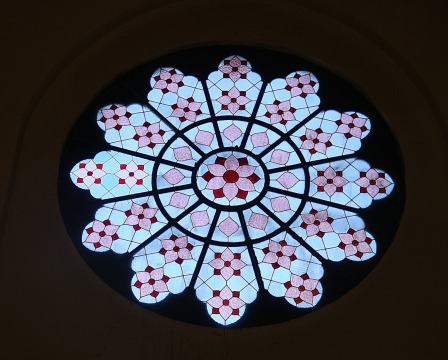“Vinegar-seller”
For over a century as the location of İstanbul’s railway station for trains to Europe, Sirkeci was one of İstanbul’s main transport hubs. Then the coming of the Marmaray robbed it of its status by inserting a modern underground station to the rear. Already the old train services to Greece had vanished and trains to Bulgaria now depart from unglamorous Halkalı rather than from Sirkeci. But then in 2024 trains once again started departing from the Sirkeci platforms as a new U-bahn light railway offering services to Kazlıçeşme came into being.
Should you need, one there is a tourist information office on the side of the station facing Sirkeci tram stop.
Sirkeci Station
Sirkeci Station itself is a fine building better appreciated from the side facing the Bosphorus than from the main entrance to the concourse. From here you can see that it was designed in Orientalist style by the German architect August Jasmund. The work was completed in 1889. It’s well worth taking a close look at the stained glass and fine vaulted ceilings of some of the rooms on the concourse. Unfortunately scaffolding has been marring its grand facade for more than a decade without any apparent restoration work taking place. 
Before rushing to board a train it’s worth popping your head inside the small museum (admission free, closed Sundays and Mondays) on the forecourt of the station which formed the terminus for the famous Orient Express from London and Paris. Here you’ll find photos and souvenirs from the days when travel was the preserve of those with big money and meals in the restaurant car were served on bone china.
There is nothing to show for it now but Sirkeci Station stands on the site of the old Romano-Byzantine Phosphorion, the city’s first harbour which survived until around 1000 by which time it became too silted up to be used. The harbour is known to have been surrounded by warehouses and other public buildings; the remains of some of them were uncovered during work to add a station for the Marmaray to the complex and have now been re-erected at Sarayburnu.
Around the station
For the time being the area in front of Sirkeci Station is rendered very messy by a car parking area and the tramlines but if you look more closely at the soot-blackened buildings facing the station you will see that some of them are fine 19th-century edifices just in need of a bit of TLC.
 Eating
Eating
On the quiet Sirkeci is quite an interesting area for foodies.
Turn down the small side street beside the Burger King opposite Sirkeci Station to find the Tarihi Subaşı Lokantası, a branch of the hugely popular cafe near the Kapalı Çarşısı that has been dishing up excellent home cooking to its customers since 1959.
Just a few doors down from Burger King you’ll also find Konyalı, a smaller and much more low-key branch of the cafe in the grounds of Topkapı Palace, its walls decorated with drawings and testimonials from famous customers including Bedri Rahmi Eyüboğlu, the poet whose İstanbul Destanı (Saga of İstanbul) offers vivid descriptions of the city’s most memorable features, not least the squabbling seagulls.
On the station concourse itself the Orient Express Restaurant has been in business since the station opened and finds favour with many diners. In summer you can eat outside by the platforms, in winter there’s a large indoor dining room.
Transport info
There is a stop on the T1 Kabatas-Bağcılar tramway at Sirkeci which is also home to the Şehir Hatları car ferry (https://www.sehirhatlari.istanbul/) across to Harem and a bus terminal for Anatolian services. The Sirkeci Marmaray station is to the rear of the station. When using the Marmaray you need to touch your travelcard onto a machine not just when entering the station but when leaving at the other end too.
A U-bahn light-rail train runs from Sirkeci to Kazlıçeşme calling at Cankurtaran, Kumkapı, Yenikapı, Cerrahpaşa, Kocamustafpaşa and Yedikule.
Sirkeci is a short downhill walk away from Sultanahmet and an even shorter one to the ferries to Üsküdar, Kadıköy and the Princes Islands at Eminönü.
Nearby areas



